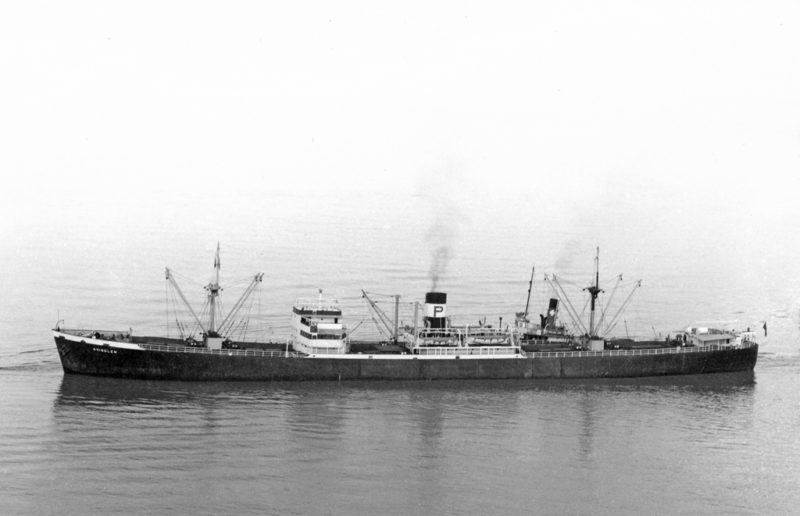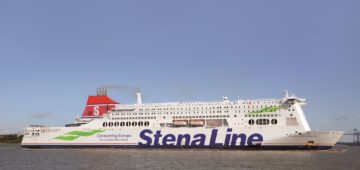Seed Shipping Co. Ltd. and Purvis Shipping Co. Ltd.

This is the story of two Newcastle shipowning families that were linked by their respective shipowning companies. Thomas Hartley Seed (1881-1939) was a busy Newcastle coal factor and exporter as well as a shipbroker of Harper, Seed & Company of Exchange Buildings in Newcastle, Hull, London, Cardiff and Newport with a total of 37 staff in 1914. Henry George Harper had founded this company in 1876 and the steamer Greta built in 1873 by J. Softley & Company at South Shields was an example of his shipbroking transactions. Thomas H. Seed joined Henry George Harper as a partner in 1909 to form Harper, Seed & Company, but he suffered significant embarrassment during the Great War when he was found guilty of attempting to sell coal to Germany. He was heavily fined but went on to become the head of Thomas H. Seed & Co. Ltd., shipowners based in Newcastle, Hull and London. He had been born in 1881 at 3 Cheltenham Street in Blackburn to his parents Ellen and Charlie Seed, who was an insurance agent. He obtained his first employment, like his father, as an insurance and ship’s agent and shipbroker in the Port of Blyth.
He married Aimee Montague Seed, originally from France, and they lived in a large Victorian house originally called Loansdean House, but Thomas changed its name to The Kylins in the 1920s. A kylin is a creature from Chinese legend that brings benevolence, wisdom and protection to those he guards throughout their lives. The two storey large house had many rooms all with bay windows on the front facade and 5.6 acres of grounds. Thomas also lived at Apley Grange in Harrogate during the 1920s decade, a grand mansion built in 1914 by and for William S. Arnold (1858-1915), a building contractor. Thomas H. Seed found Apley Grange to be convenient for his many business interests spread around the East Coast of England. He founded the Seed Shipping Co. Ltd. in Newcastle with a share capital of £50,000 on 6th January 1922, with shares quoted on the London Stock Exchange.

Noel Wilfred Purvis was born in 1896 in Italy to parents Johnson Hardcastle Purvis (born 1854) and Barbara Melvile Purvis (born 1863). The father of Noel had emigrated to Italy in the 1880s and lived in Pozzuoli near Naples, with two of his three brothers also born in Italy, and the family then returned in 1901 to live in Morpeth and Elswick in Newcastle. Noel W. Purvis was apprenticed as a clerk to a Newcastle shipowner in 1911, and continued to work in the shipping industry until he set up Purvis Shipping Co. Ltd. in 1941 to manage ships for the war effort and the Ministry of War Transport. In 1946, he purchased the dormant Seed Shipping Co. Ltd., which had become dormant at the end of 1933 as the Great Depression bit hard into the finances of Newcastle tramp and collier companies. He renamed the dormant company as the Aviation and Shipping Co. Ltd.
The Tyne pilots belong almost up to the present time to another branch of the Purvis family. John Purvis was Pilot Master from 1893 to 1905, serving with no fewer than twenty other members of the Purvis family as pilots at that time. There were 16 members of the family as pilots in 1961 of the Tyne Pilotage Authority, six in the year 1981, four out of a dozen pilots in 1988, and two out of eight pilots in 1998. Alan Y. Purvis retired in 2008, the last of the many Tyne pilots of the Purvis family.
SEED SHIPPING CO. Ltd.
The first ship of this company had been launched on 1st March 1911 as Yard number 168 for the Atlantica Sea Navigation Co. Ltd. of Budapest as Hunnia of 2,234 grt by the Wood, Skinner & Co. Ltd. yard at Bill Quay in Gateshead. This yard had an extensive river frontage of 380 feet with eight slipways of up to 500 feet in length to build steam tramps and colliers. It was owned by two experienced shipbuilders in William Wood, who lived in Jesmond in Newcastle, and James Skinner, who lived in South Shields. The yard completed 330 ships until it failed financially at the end of 1925, with the gaunt frame of an incomplete collier hull remaining throughout the Depression of the 1930s until finally broken up in situ. Hunnia had a single deck with a poop, bridge and top gallant fo’c’stle, with accommodation ‘midships for the Master, navigating officers and the engineers, with the crew housed in the fo’c’stle. She carried ample water ballast in her cellular double bottom, forepeak and aft peak. She had two masts with a large crow’s nest on the foremast, and ample deck machinery. Two large multitubular boilers raised steam for a triple expansion steam engine supplied by Blair & Co. Ltd. of Stockton. She had two changes of name before she joined the Newcastle company as Monica Seed in 1922. She was sold in 1924 to Japanese owners and renamed Kogiku Maru and wrecked on 7th December 1932 off Shinto Island forty nautical miles to the south of Chemulpo while on a voyage from Wakamatsu to Chemulpo with coal.

Subscribe today to read the full article!
Simply click below to subscribe and not only read the full article instantly, but gain unparalleled access to the specialist magazine for shipping enthusiasts.





Comments
Sorry, comments are closed for this item